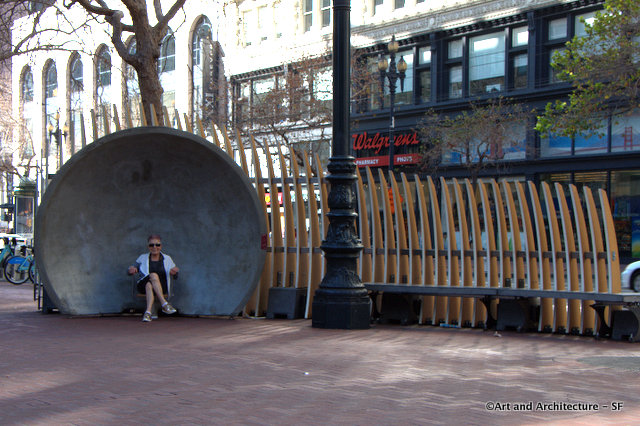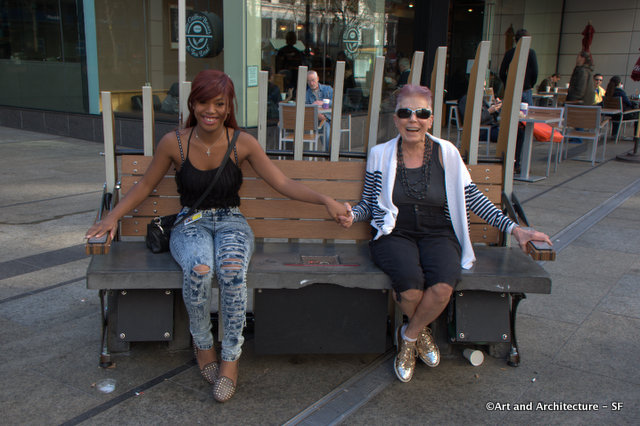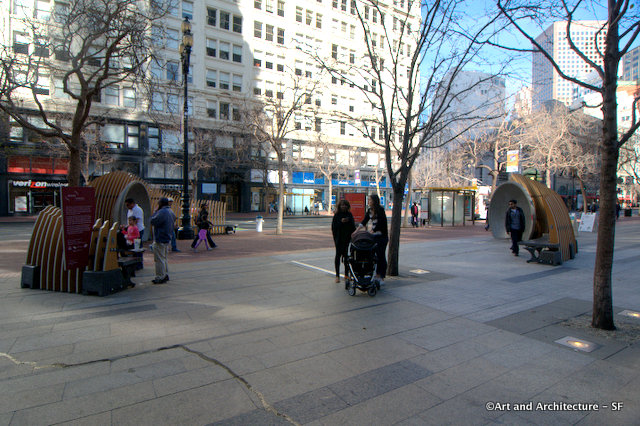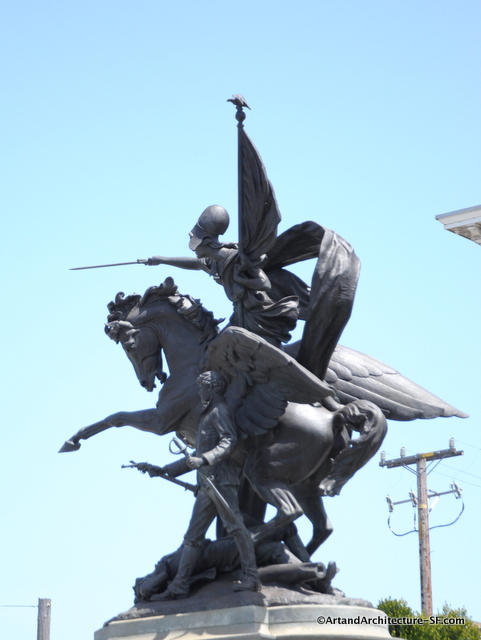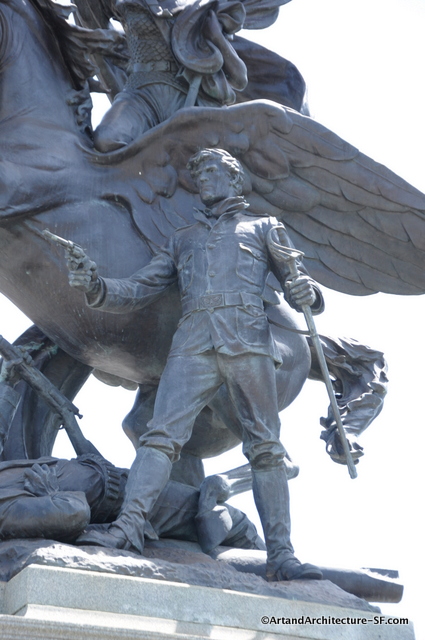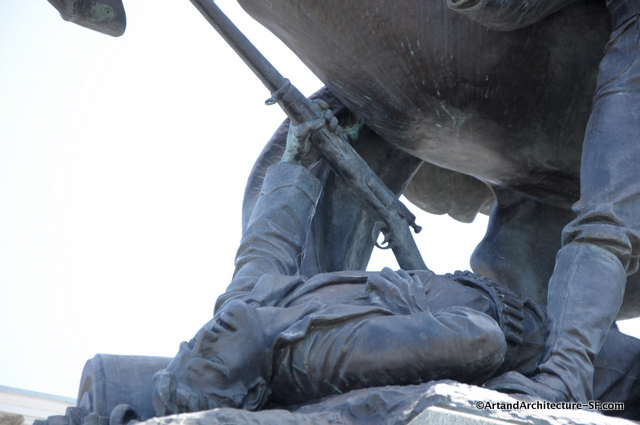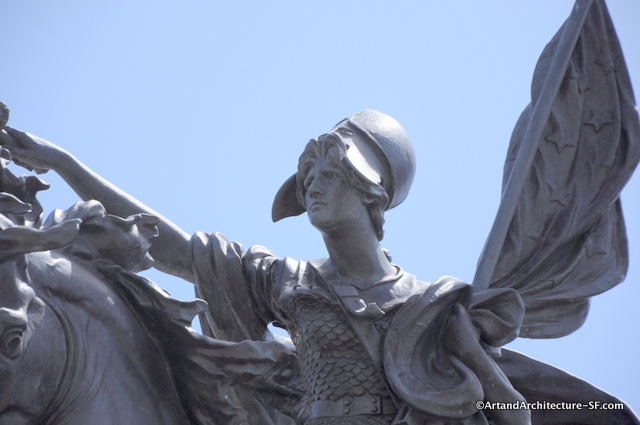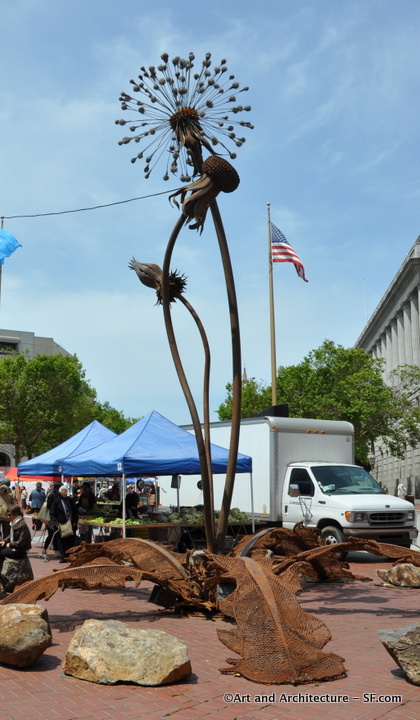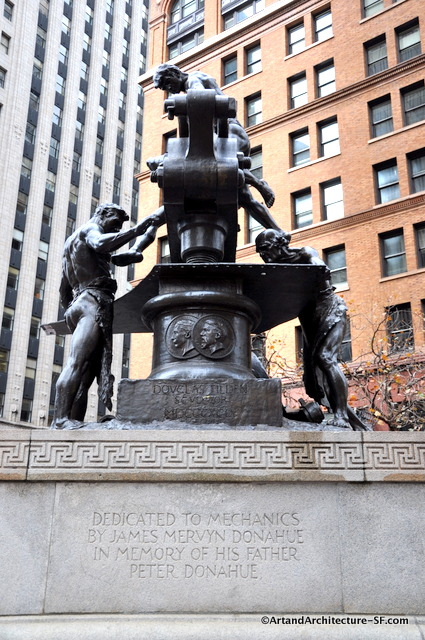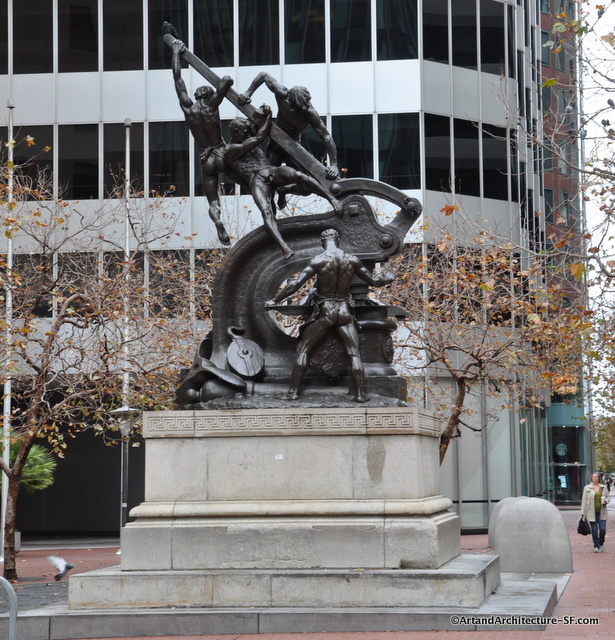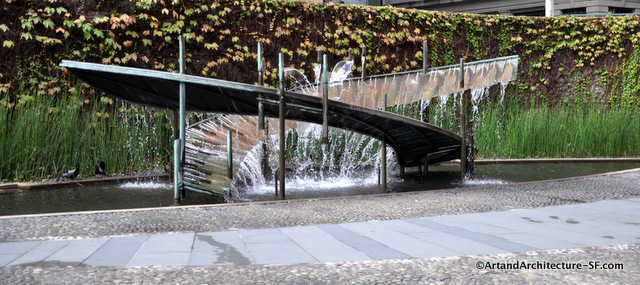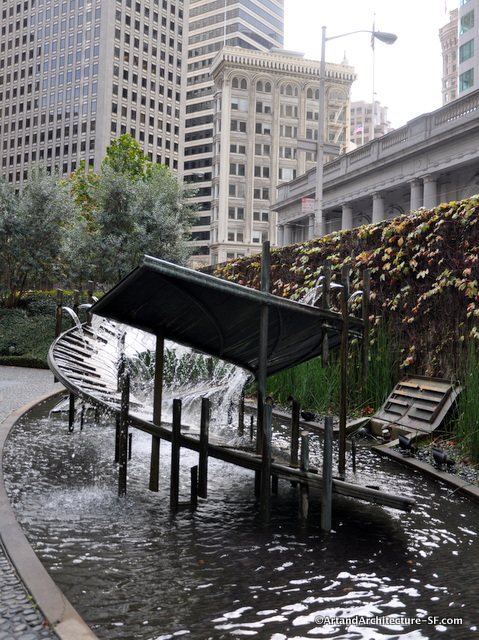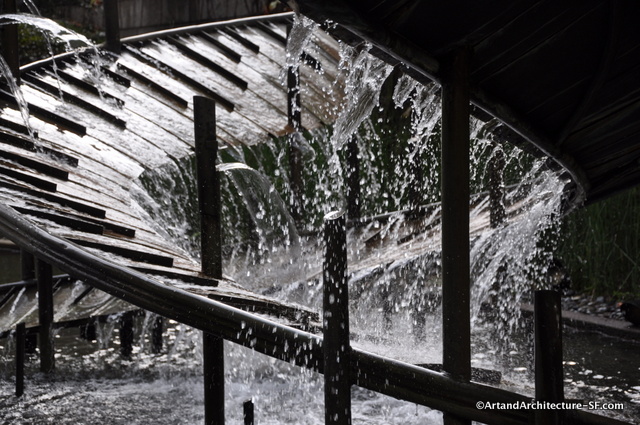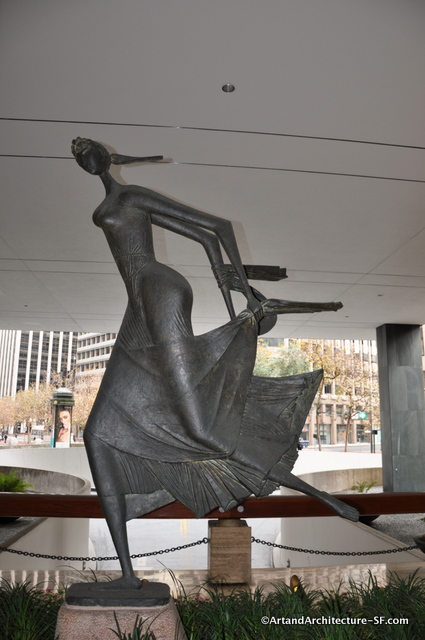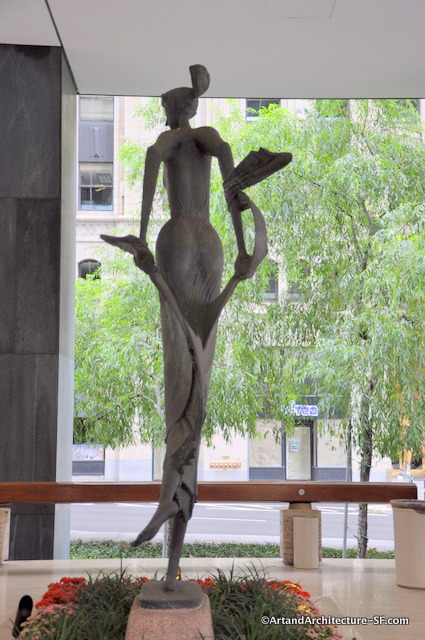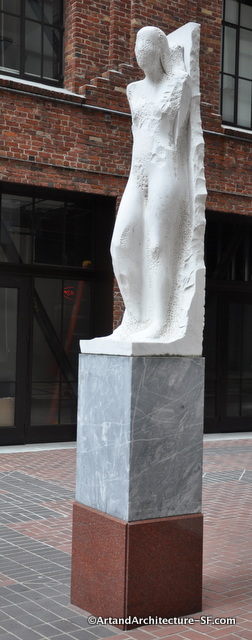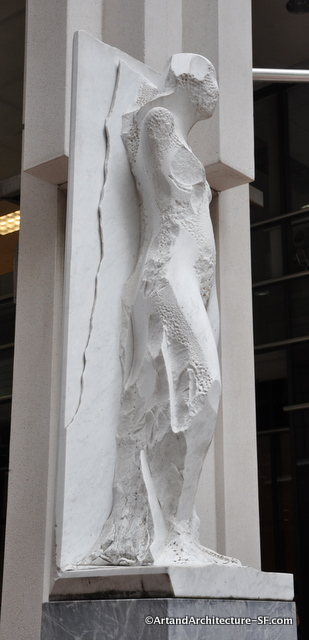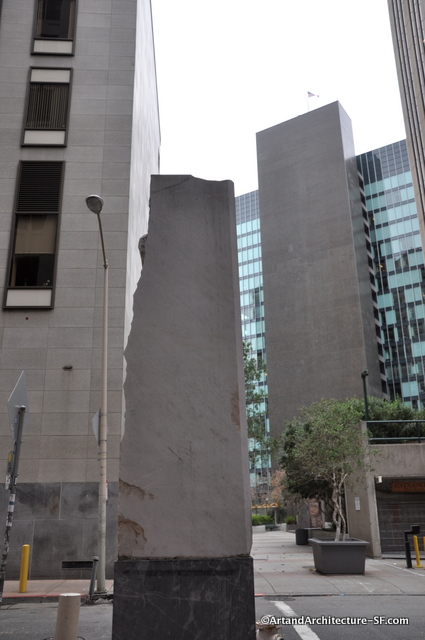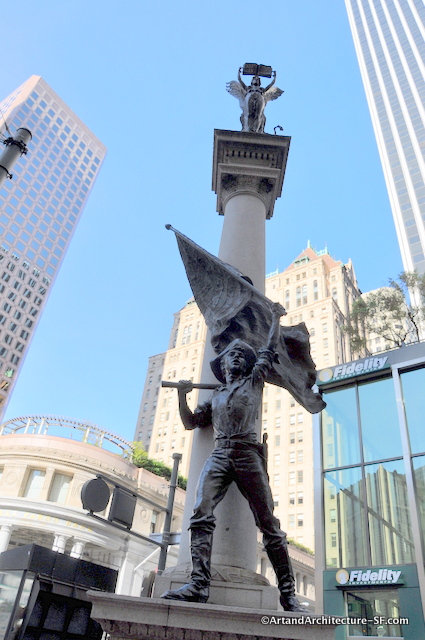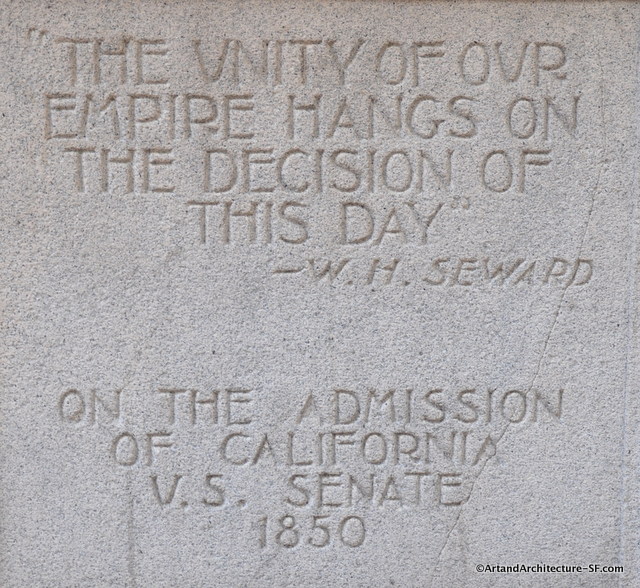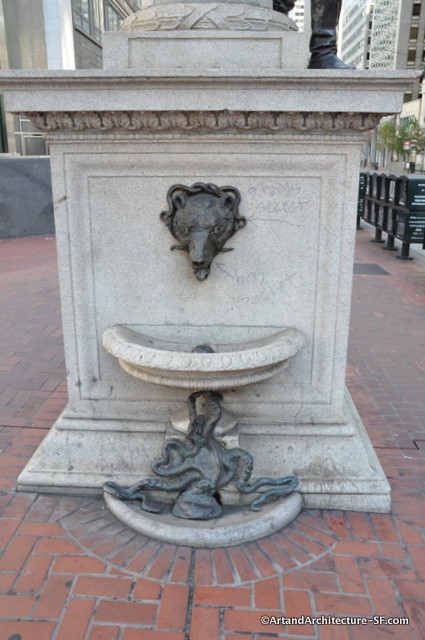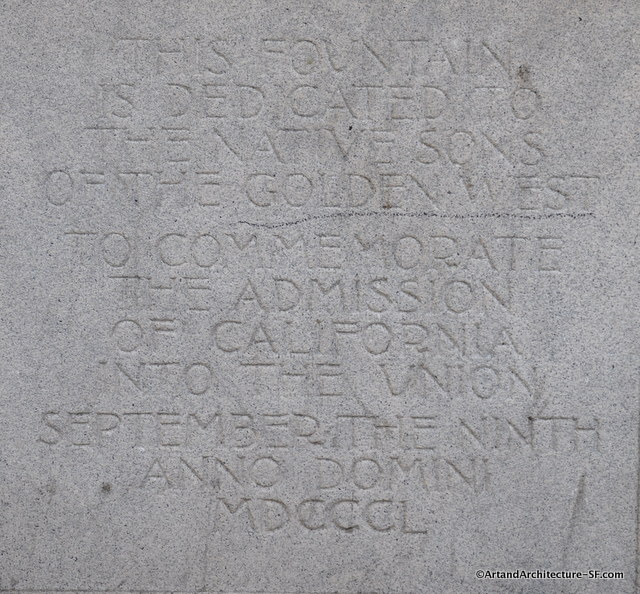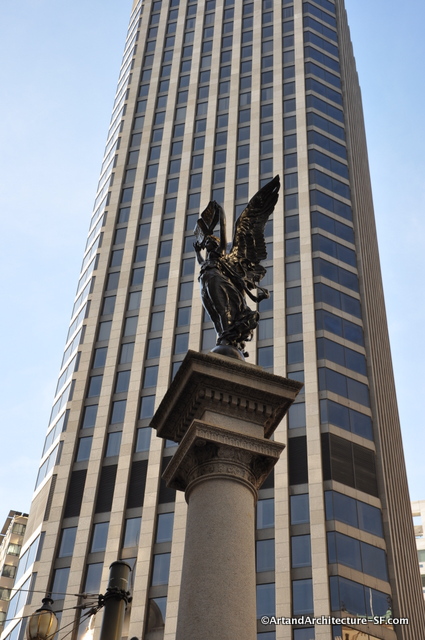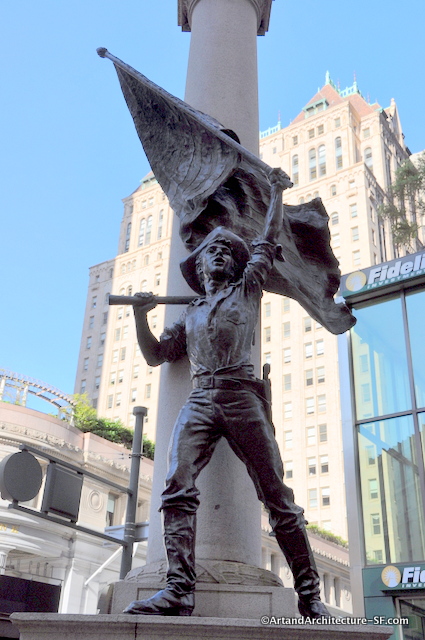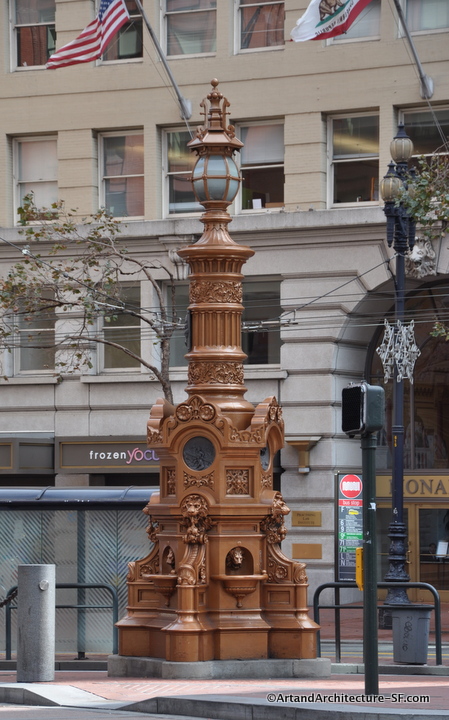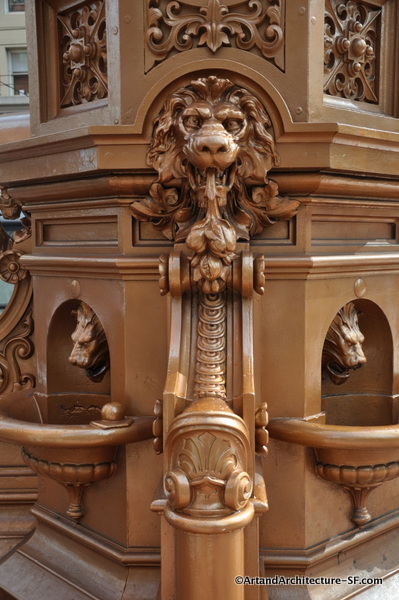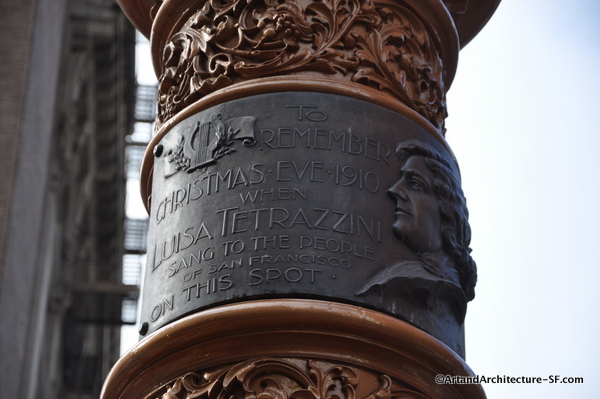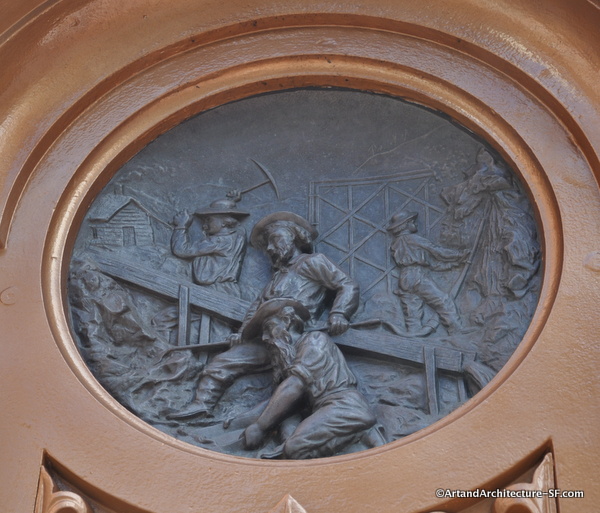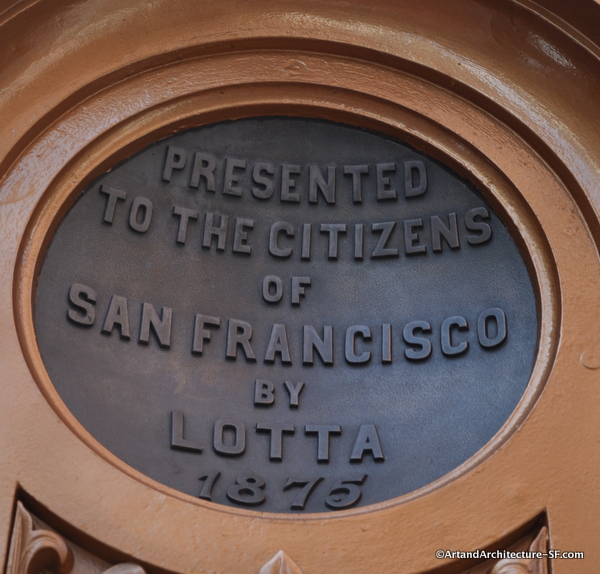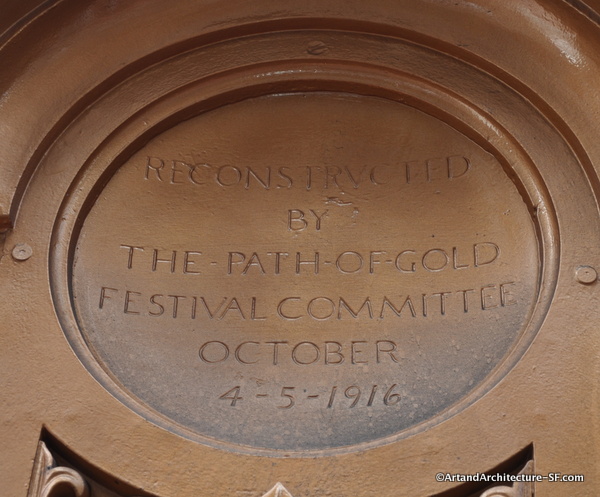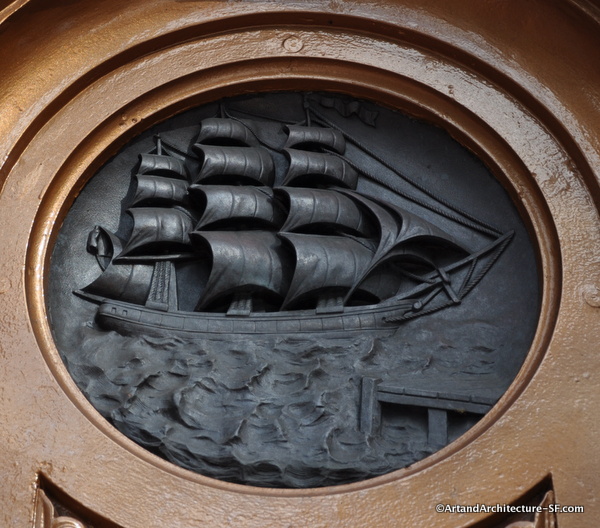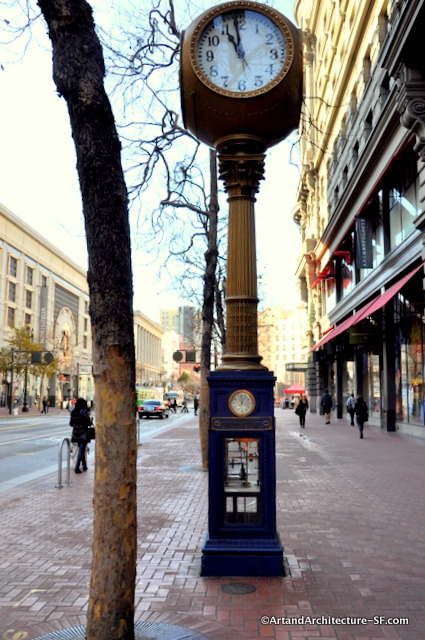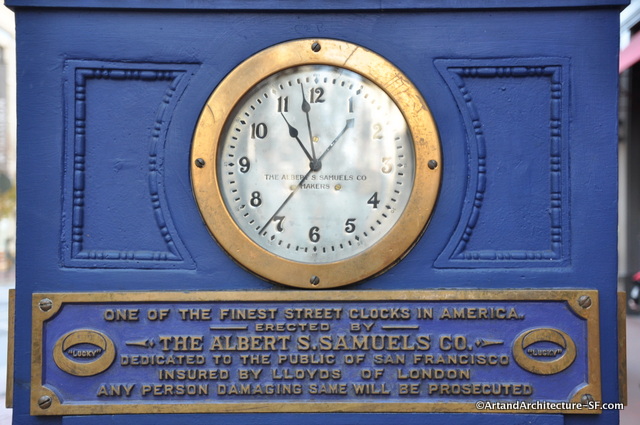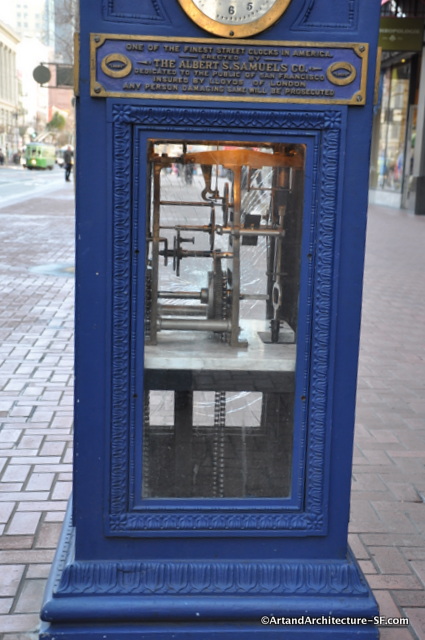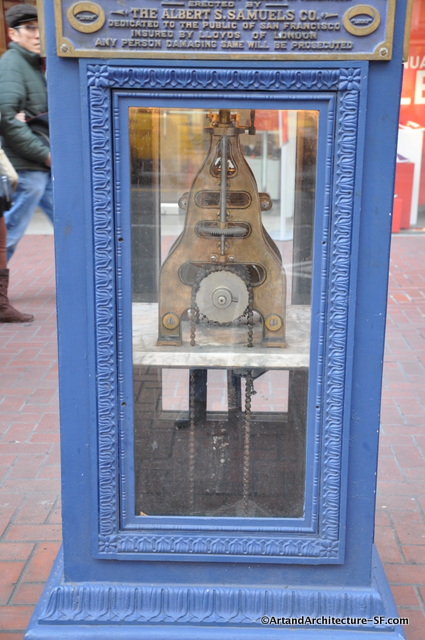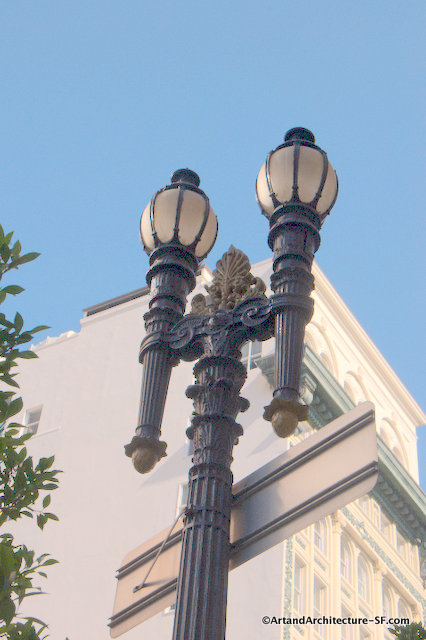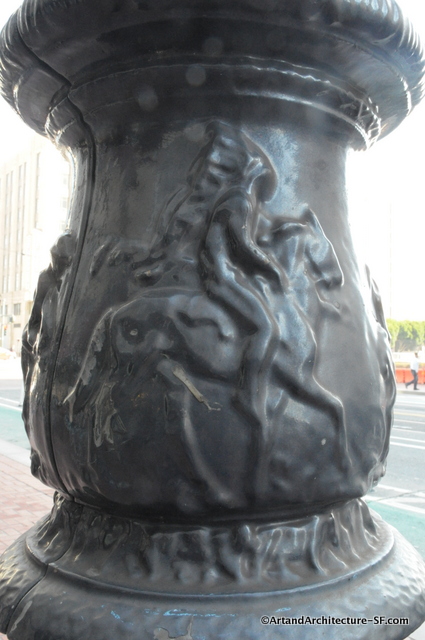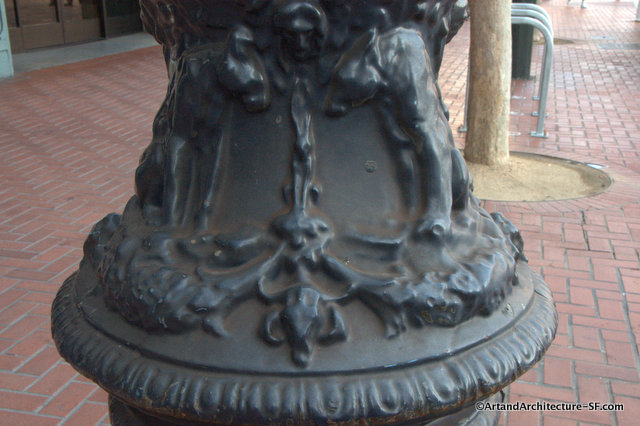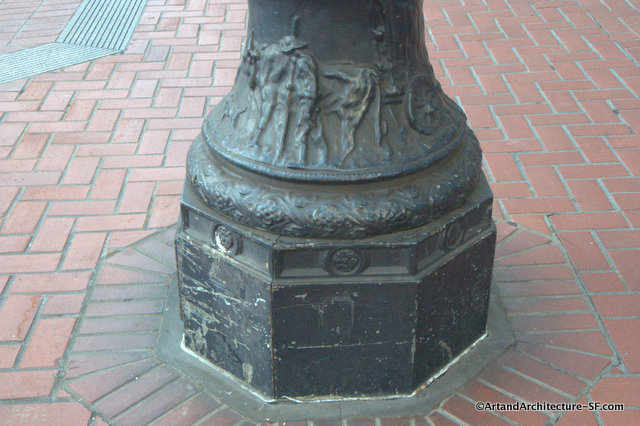720 Market Street

Angel by Stephen de Staebler
Kenneth Baker of the San Francisco Chronicle wrote this in 2002 “Several years ago a winged bronze figure by Bay Area’s sculptor Stephen de Staebler appeared without fanfare, nestled against a building facade on Market Street.
Looking gnawed by time, as de Stabler’s figures typically do, it reads as an elegy for the waning of humanism, in the symbolic form of a ruined angel. By not overreaching in scale, content or its bid for attention, the piece achieves an improbable grandeur ”
*
From DeStaebler’s obituary in the New York Times:
Stephen De Staebler, a sculptor whose fractured, dislocated human figures gave a modern voice and a sense of mystery to traditional realist forms, died on May 13 at his home in Berkeley, Calif. He was 78.
The cause was complications of cancer, Jill Ringler, his studio archivist, said.
Mr. De Staebler found his medium when he met the pioneering ceramist Peter Voulkos at the University of California in the late 1950s. Impressed by the expressive possibilities of clay, he began making landscape-like floor works.
In the late 1970s he began coaxing distressed, disjointed humanoid forms from large, vertical clay columns. Colored with powdered oxides and fired in a kiln, they presented potent images of broken, struggling humanity.
“We are all wounded survivors, alive but devastated selves, fragmented, isolated – the condition of modern man,” he recently told Timothy A. Burgard, a curator at the Fine Arts Museums of San Francisco, who is organizing a De Staebler retrospective. “Art tries to restructure reality so that we can live with the suffering.”
Stephen Lucas De Staebler was born on March 24, 1933, in St. Louis. While working toward a bachelor’s degree in religion at Princeton, he made art on the side and spent a summer at Black Mountain College studying painting with Ben Shahn and Robert Motherwell.
After receiving his bachelor’s degree in 1954, he served with the Army in West Germany. He enrolled at Berkeley intending to teach art in the public schools but, after receiving his teaching credentials, earned a master’s degree in art in 1961.
He exhibited widely, particularly in the Bay Area, where he taught for many years at the San Francisco Art Institute and San Francisco State University.
In 1988 Saddleback College in Mission Viejo, Calif., organized the traveling exhibition “Stephen De Staebler: The Figure.” Reviewing the show at the Neuberger Museum of Art at the State University of New York, Purchase, Michael Brenson, in The New York Times, noted the enigmatic, disjointed nature of Mr. De Staebler’s art.
“In his human comedy, wholeness has no meaning,” he wrote. “His men and women — when it is clear that they are men or women — seem like pieces of a puzzle without a key.” By this time, Mr. De Staebler had begun working in bronze as well as clay.
“Matter and Spirit: Stephen De Staebler,” his retrospective, is scheduled to open at the de Young Museum in San Francisco in January 2012.
Mr. De Staebler;s first wife, the former Dona Curley, died in 1996. He is survived by his wife Danae Mattes; a daughter, Arianne, of Berkeley; and two sons, Jordan, of Oakland, Calif., and David, of Bishop, Calif.
“The human figure is the most loaded of all forms because we live in one,” Mr. De Staebler told Mr. Burgard, the curator. “The figure obsesses not just artists, but human beings. It’s our prison. It’s what gives us life and gives us death.”
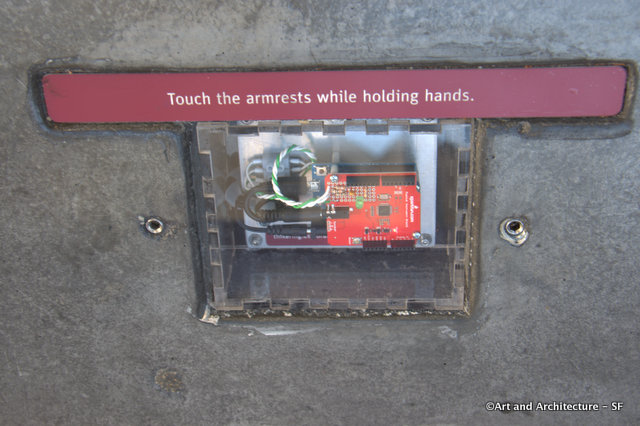 These two projects are some of the favorites at the Exploratorium on the Embarcadero, which is how they were chosen.
These two projects are some of the favorites at the Exploratorium on the Embarcadero, which is how they were chosen.